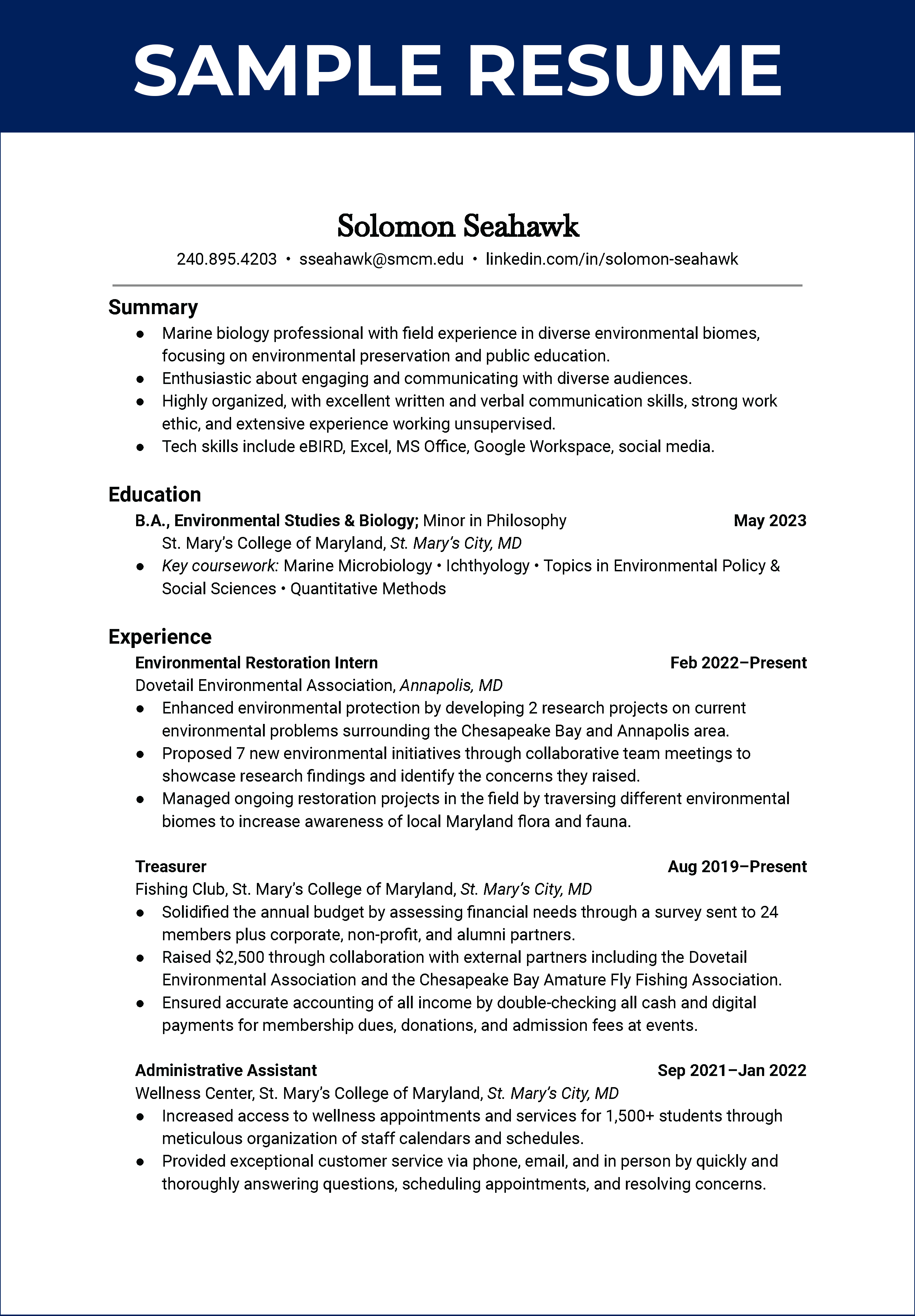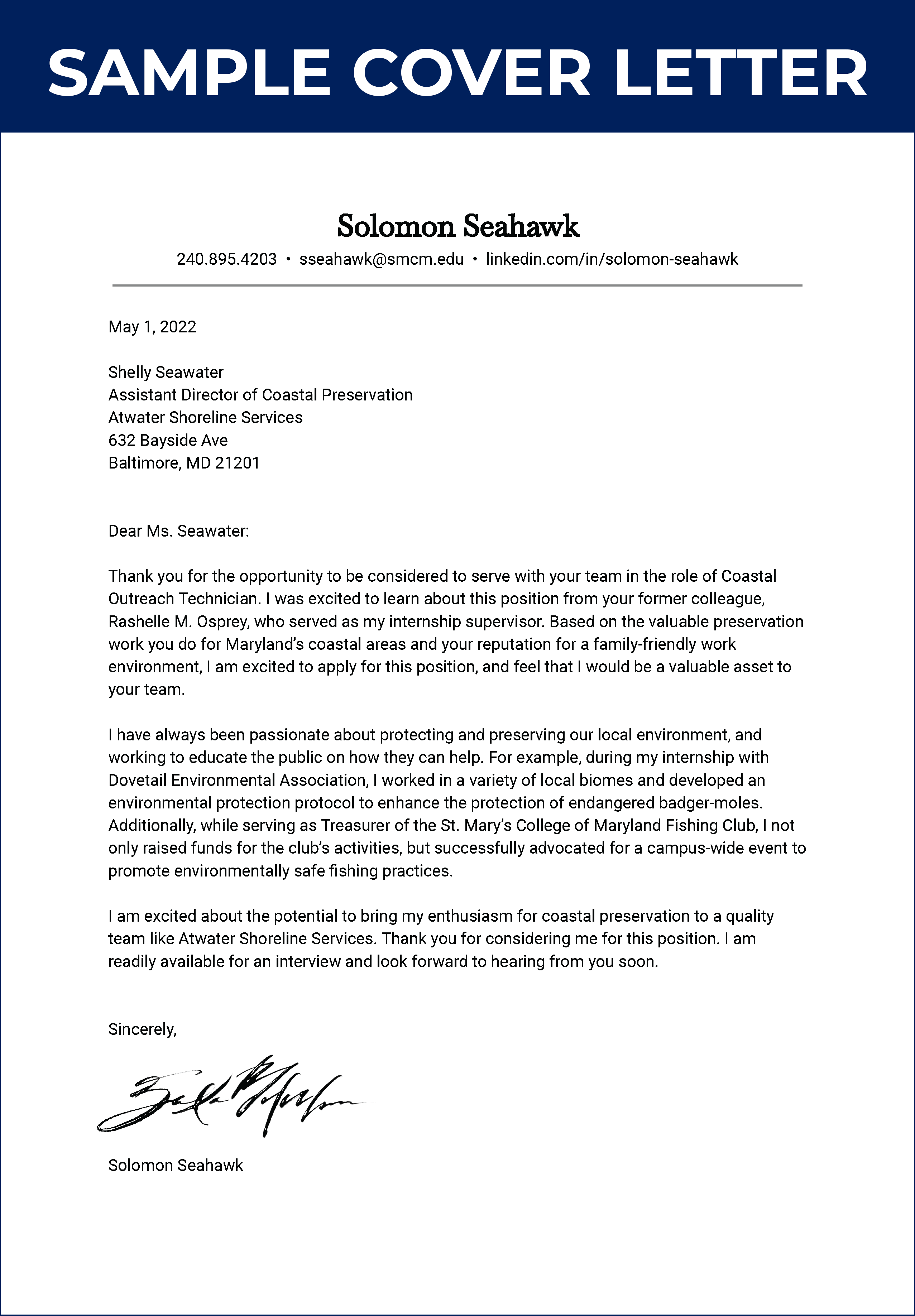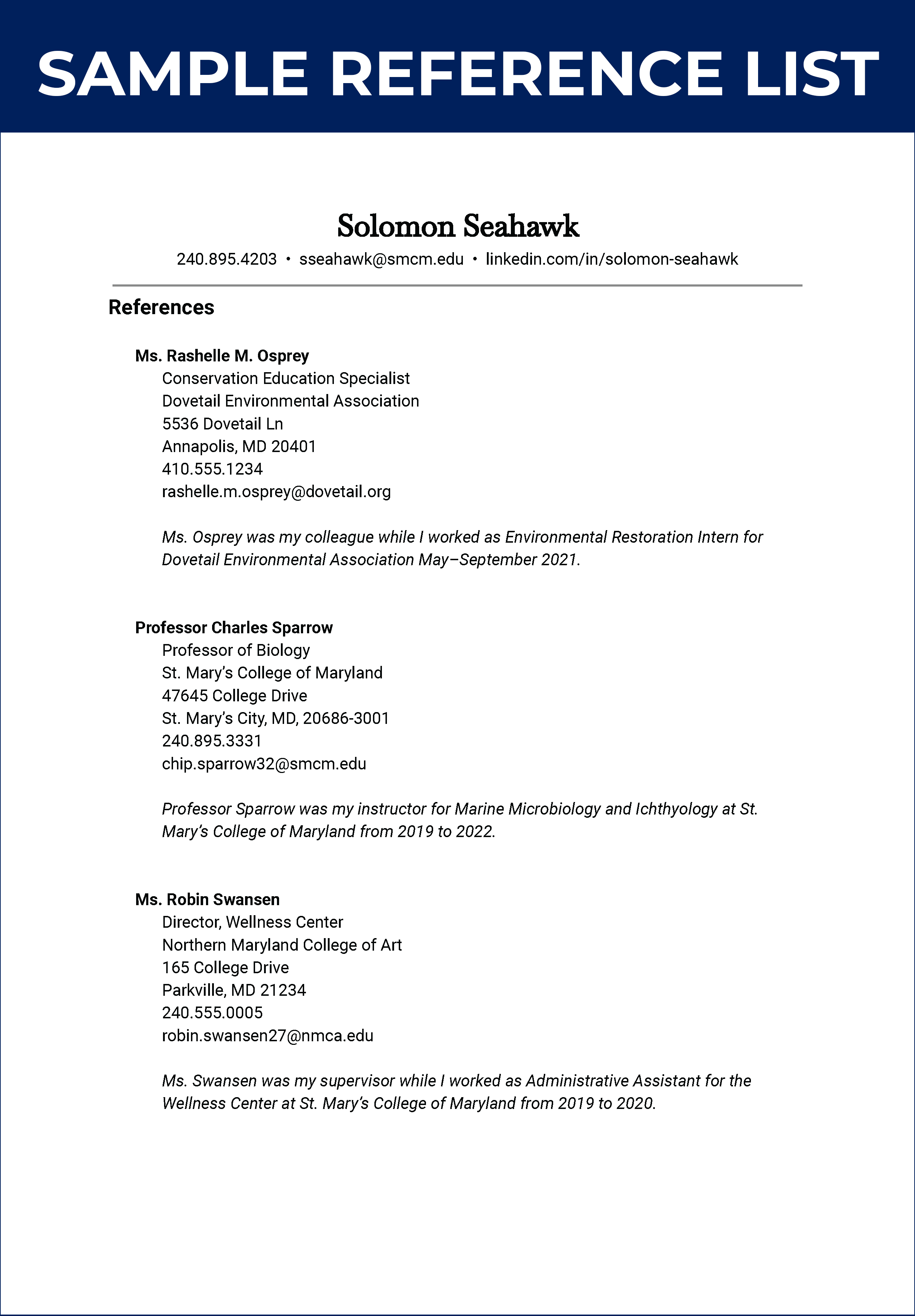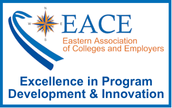Excellent professional documents—your resume, cover letter, and reference list—are an important part of professional branding. They are valuable tools to advertise you to employers and help you get interviews for great opportunities. Read below for details on how to make a great impression with each of these documents.
You can also download this information as a PDF.
GENERAL TIPS
Use all three documents: resume, cover letter, and reference list
A resume connects your skills, characteristics, and experience directly to the opportunity you’re applying for. See our resume template here.
A cover letter tells the employer why you are truly interested in their specific organization and opportunity, and gives additional detail on why you’d be an asset to their team. (You do not need this at hiring fairs, but it is often a required part of job/internship applications.) See our cover letter template here.
A reference list is a brief list of people the employer can call to confirm you’re as skilled and trustworthy as you say you are. (You do not need this at hiring fairs, but it is often a required part of job/internship applications.) See our reference list template here.

What if there’s no space to add my cover letter and/or reference list?
If the application system doesn’t have spots for every document, you can combine them into one PDF and submit them, in this priority order:
- If there’s only one spot for documents, create a PDF with your cover letter first, then your resume, then your reference list.
- If there are two spots for documents, submit your resume separately, and combine your cover letter and reference list with the cover letter first.
Consistency is Essential
Your documents should match each other—use the same header and fonts on each. That way, they’re clearly branded as coming from the same person: you!
Tailor for each opportunity
Invest the time to customize your documents—it will pay off, because employers quickly see that you care about their specific organization and opportunities.
Name your PDFs
Always send PDFs when you apply—they look the same on all devices.
Name your files clearly by including your name and the document type:
-
- Solomon Seahawk – Resume.pdf
- Solomon Seahawk – Cover Letter.pdf
- Solomon Seahawk – References.pdf
Should I send a PDF for a resume review?
If you’re getting help with a resume review, please share/send an editable Google Doc or Word Document. That way, we can help you make changes on the spot!
HOW TO WRITE A GENERAL RESUME
Write for the reader
Write a good general resume first, then tailor your resume for each specific opportunity you apply for.
Use simple past tense throughout your resume, even for employment/classes/volunteer work you are currently doing. It’s easier for the reader to follow, and it means you don’t have to change the verbs every time you move on to the next opportunity.
Know the industry
The principles here apply generally across industries. However, you need to confirm details specific to your industry and target employer(s).
How do I confirm the best resume format for my industry and target employer(s)?
Reach out to Seahawks working in the industry. One great way to find them is on LinkedIn at linkedin.com/school/st.-mary’s-college-of-maryland/people.
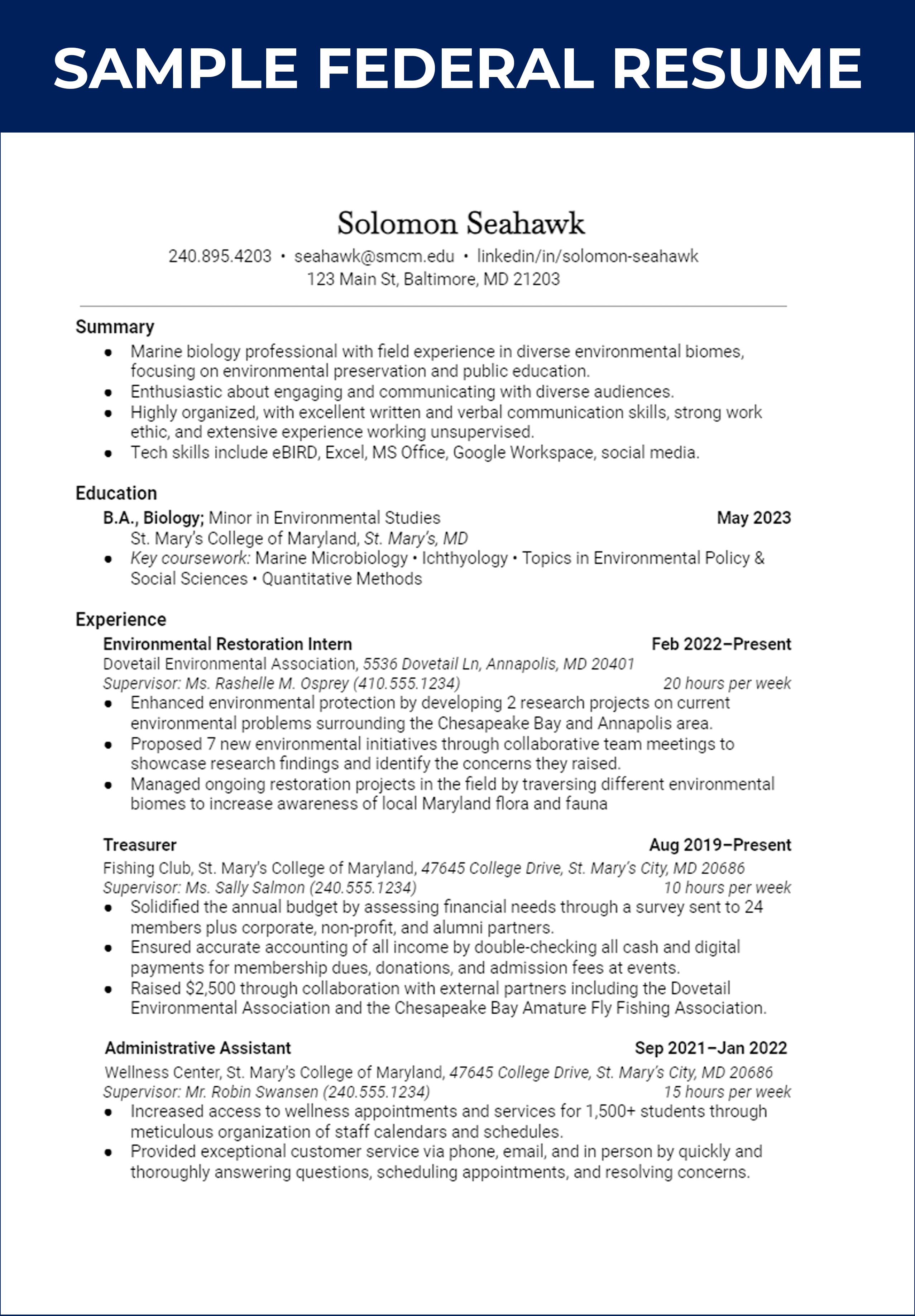
HOW TO WRITE A FEDERAL RESUME
Getting started
USAJOBS is the U.S. Government’s website for listing civil service job opportunities with federal agencies. Create an account with USAJOBS to get started and build your federal resume. You can also use our template, but the USAJOBS Resume Builder should be your primary federal resume.
Hiring managers use job announcements to describe the job and the required qualifications. Qualifications include things like your amount of experience, education, and training. Be sure to read the entire job description. It is important that you meet the required experience and/or education requirements before you apply. You can find this information under the Duties and Qualifications, How to Apply, and How You Will Be Evaluated headings.
What should I include in my federal resume?
Many federal positions typically require prior experience in a specific field for a designated period of time. To be eligible for the job, you must demonstrate how your skills and background align with the qualifications and prerequisites outlined in the job posting. Be sure to include important contact information, such as your email, home address, and phone number. Check the job announcement for more details about what personal information to include.
For more information about what to include in your federal resume, check out usajobs.gov.
What should I leave out of my federal resume?
There are certain forms of personal information that you should leave out of your resume. This includes:
- Classified or government sensitive information
- Your Social Security Number (SSN)
- Photos of yourself
- Personal information, such as age, gender, religious affiliation, etc.
- Encrypted and digitally signed documents
- Salary history—unless listed as a requirement.
- Remember, your pay history may not accurately reflect how valuable you are to the new position you’re applying for.
- Including a lower salary may result in you getting hired for lower pay.
- Including a high salary may result in the employer throwing out your application.
For more information about what to leave out of your resume, go to usajobs.gov for more tips.
More tips for submitting resumes to federal agencies
If the agency you are applying to allows it, you should consider using the USAJOBS resume builder. Some agencies will take uploaded resumes and resumes created using the USAJOBS resume builder. Others may only accept one or the other. The resume builder allows you to copy and paste text from Word documents into the software.
Even though you may have both types of resumes in the Document section of your profile, the agency you are applying for will determine which resume to accept. Selecting the Apply button on the job announcement page begins the process to complete an application.
USAJOBS will only show resumes and documents your hiring agency is willing to accept. For instance, if the hiring agency only accepts resumes created using the USAJOBS resume builder, then your uploaded resumes will not be available to add to your application. Be sure to check the How to Apply section of the job announcement to find out which resume format and documents are accepted and how to submit them to the hiring agency.
For more tips on submitting resumes to federal agencies, see usajobs.gov for more tips.
HOW TO WRITE A COVER LETTER
Body
- First paragraph: Tell the employer why you’re writing to them. Include the title of the position you’re applying for and how you found out about it. Find information about the specific organization and tell how it relates to your interests. It’s kind of like a love letter—you have to tell them why you’re interested in them, not just that you want a job.
- Second paragraph: Explain what makes you unique and valuable as a candidate for the position. If you’re applying for a position with a job ad (20% of jobs), use the qualifications and responsibilities/duties sections of the ad to tailor your information. Don’t just repeat your resume. Be concise in highlighting your skills, experiences, characteristics, and/or accomplishments with a specific example or two.
- Final paragraph: Ask for an interview and say thank you.
Signature—This is required!
Leave a vertical space below the final paragraph. Type “Sincerely,” (with a comma at the end), then leave a vertical space that’s big enough for you to sign your name. Below the signature space, type your full name (the same way you listed it in the header).
Note: A cover letter is a formal business letter, so it would look unprofessional and quite odd if you didn’t sign it.
How do I put a signature on my cover letter?
There are many ways to get a signature on your cover letter, including:
- Use a digital device (smartphone, tablet, etc.) to draw your signature.
- Sign a blank paper, scan it with a scanner, then add it to your document as an image.
- Sign a blank paper, take a photo with your phone, add the signature to your document, then adjust the brightness and contrast until the background is white.
Your content should include your background and influences, relevant experiences, any obstacles or academic inconsistencies in your record, and a conclusion. For more information on content, style, and prompts, please see our Writing a Personal Statement document.
HOW TO WRITE A PERSONAL STATEMENT
A personal statement is a persuasive letter addressed to an admissions/grant committee where you present your qualifications and your intent to be a successful student and working professional. This document is often a required part of an application to graduate and PhD programs such as medicine, law, business, education, social work, public policy, international affairs, counseling, and most other professional degree programs. It is also called a statement of purpose, letter of intent, or admissions essay.
Before writing, consider what you want your audience to know. Imagine the statement as a discussion with an admissions officer where you must discuss what you know about yours and how your personal or professional network has influenced your decision. You should first pull from the qualities and skills from your experience section on your resume.
HOW TO WRITE A CURRICULUM VITAE
A curriculum vitae (CV) is a detailed document that summarizes your qualifications, skills, and experience with a specifically academic focus. It’s often used to apply for academic, scientific, or medical positions.
-
- Contact information: Your name, address, phone number, and email address
- Education: Your academic history, including the schools you attended, the degrees you earned, and the years you graduated
- Contact information: Your name, address, phone number, and email address
-
- Work experience: Your relevant work history, including the positions you’ve held and the skills you’ve developed
- Work experience: Your relevant work history, including the positions you’ve held and the skills you’ve developed
-
- Achievements: Awards, scholarships, grants, and other accomplishments
- Achievements: Awards, scholarships, grants, and other accomplishments
-
- Research: Any research projects you’ve worked on, presentations you’ve given, or guided research/capstone experiences
- Note: Your SMP would be a great project to go under your research section!
- Research: Any research projects you’ve worked on, presentations you’ve given, or guided research/capstone experiences
-
- Teaching/Leadership Experience: Experiences you have as a teaching assistant (TA), substitute teacher, peer/career mentor, club board member, etc.
-
- Publications: Any articles, papers, research projects, prose/poetry, etc. that you have published, especially if it is relevant to your field!
HOW TO WRITE A REFERENCE LIST
Match the resume
Remember to use the same header and fonts on your resume, cover letter, and reference list to show your professionalism and attention to detail.
Ask first
Always ask people before you list them as references!
List only three
Unless the employer asks for more or fewer, just list three references.
List the name of the reference, followed by their current title, employer, and contact information.
What if I don’t have all of their contact information?
If you can’t get everything, include what you have. An email address and/or phone number are definitely more important than a mailing address.
Who can be a reference?
A good reference could be a current or former supervisor, colleague, professor, classmate, or client who knows your work and your character well enough to recommend you. Avoid using family members as references.
